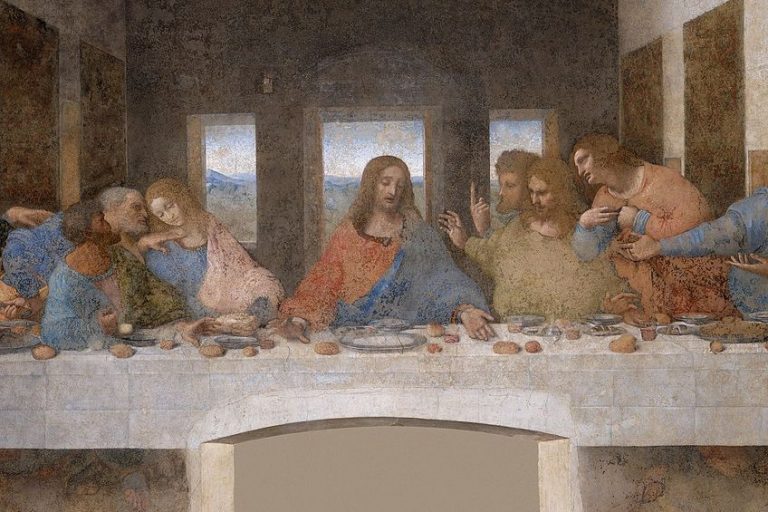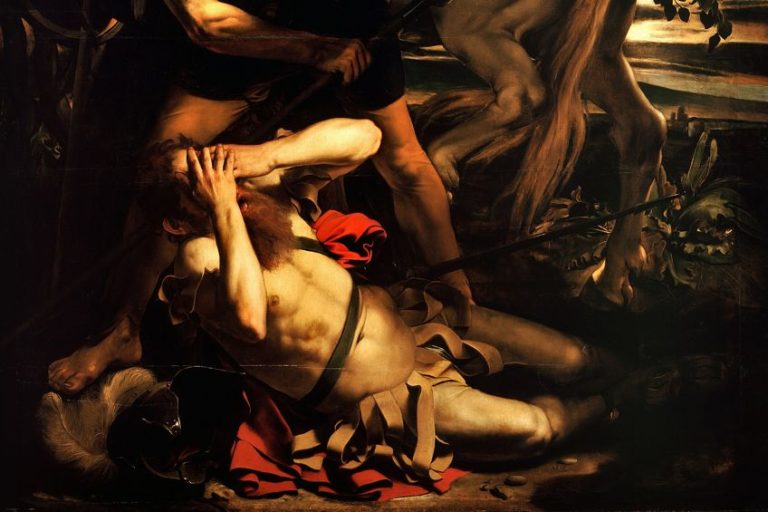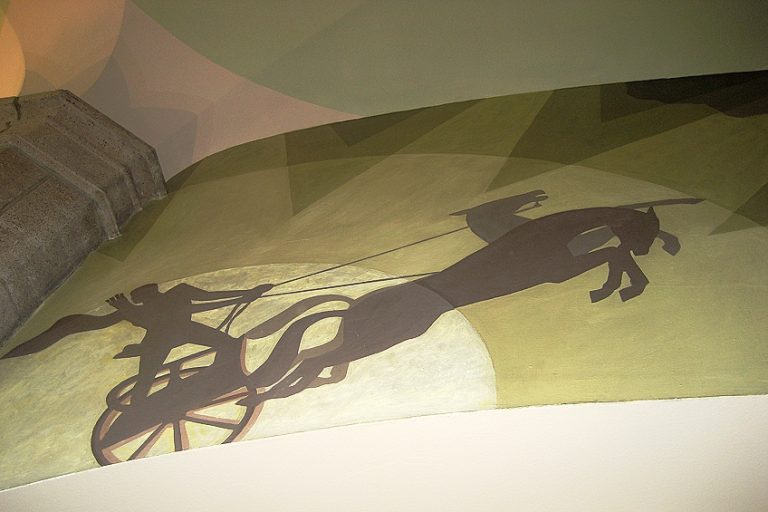“The Dream of the Fisherman’s Wife” by Hokusai – An Analysis
The Dream of the Fisherman’s Wife, created by the renowned Japanese artist Katsushika Hokusai, is a captivating piece that delves into the realm of eroticism and fantasy within traditional Japanese art. Painted in the early 19th century during the Edo period, this artwork explores the mythological tale of a fisherman’s wife entwined in a sensual encounter with octopuses. Hokusai’s masterful use of color, form, and narrative storytelling in The Dream of the Fisherman’s Wife continues to intrigue and inspire art enthusiasts, showcasing the artist’s profound talent and unique artistic vision.
Key Takeaways
- The print is by Katsushika Hokusai, a momentous figure in Japanese art.
- It blends erotic fantasy with cultural background from the Edo period.
- The piece remains a pivotal subject for discussions on sexuality in art.
Historical Context and Artistic Significance
| Artist | Katsushika Hokusai (c. 1760 – 1849) |
| Date Created | 1814 |
| Medium | Woodblock print |
| Genre | Ukiyo-e, Shunga (Erotic Art) |
| Period/Movement | Edo Period and Japanese Art |
| Dimensions (cm) | Approximately 19 x 27 |
| Series/Versions | N/A |
| Where Is It Housed? | Private collections, various museums worldwide |
| What It Is Worth | Considered priceless due to historical significance and rarity |
The Dream of the Fisherman’s Wife is a woodblock print designed by renowned Japanese artist Katsushika Hokusai. Created in 1814, this work is part of Hokusai’s Kinoe no Komatsu series and is recognized as one of his most famous shunga, or erotic art pieces. The print features an ama diver – a female shell diver – in an erotic encounter with two octopuses, presenting a provocative fusion of fantasy and traditional Japanese fishing culture.
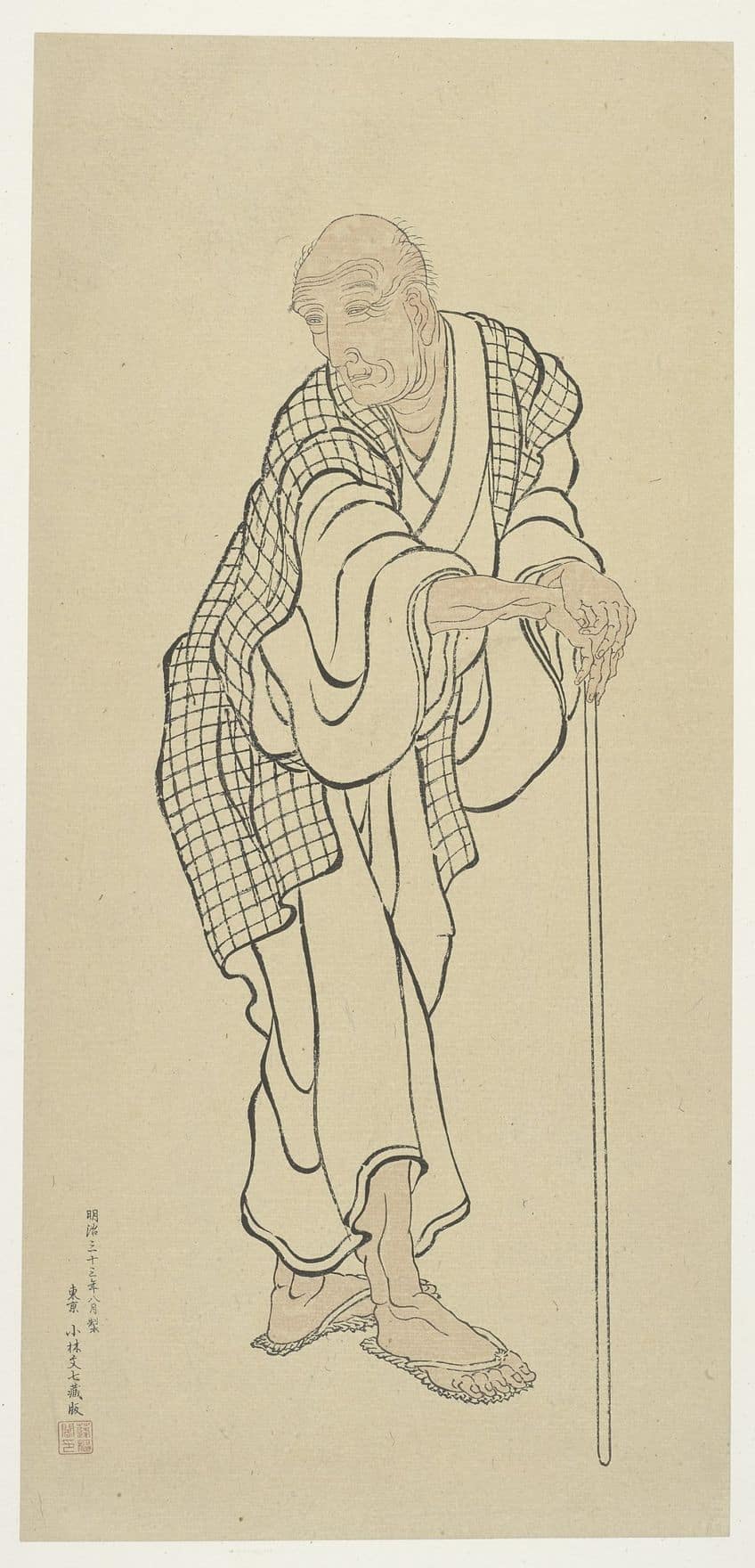
Since its publication, Hokusai’s piece has sparked diverse interpretations and continuous discussion in both historical and contemporary contexts. Its explicit content aligns with the Edo period’s more open attitude towards human sexuality, while Hokusai’s craftsmanship is evident in the intricate and expressive use of line and form. This particular piece not only highlights the artist’s skill and the societal norms of the time but also serves as a significant point of reference for the exploration of eroticism in art. The Dream of the Fisherman’s Wife is a quintessential example of the ukiyo-e genre from Japan’s Edo period, reflecting the artistic significance of Hokusai and the cultural role of shunga within Japanese society.
Ukiyo-e Genre and Edo Period
The Edo Period (1603 – 1868) in Japan was a time of relative peace and prosperity, which led to a cultural flourish known as the Ukiyo-e genre. Ukiyo-e, which translates to “pictures of the floating world,” encompasses woodblock prints and paintings that depicted a variety of subjects from landscapes to the pleasure quarters.
Katsushika Hokusai is one of the most iconic artists of this genre, known for his stylistic innovation and his influence on both Japanese art and Western impressionism.
Katsushika Hokusai and His Influence
Katsushika Hokusai, active during the late Edo period, was a master of ukiyo-e art. His work is renowned for its dynamic compositions and vibrant details. Hokusai’s art was not confined to Japan but also reached and influenced artists in Europe, contributing to movements like Impressionism. His print series, Thirty-six Views of Mount Fuji, which includes the famous The Great Wave off Kanagawa, is a testament to his influential role in art not only in Japan but globally.
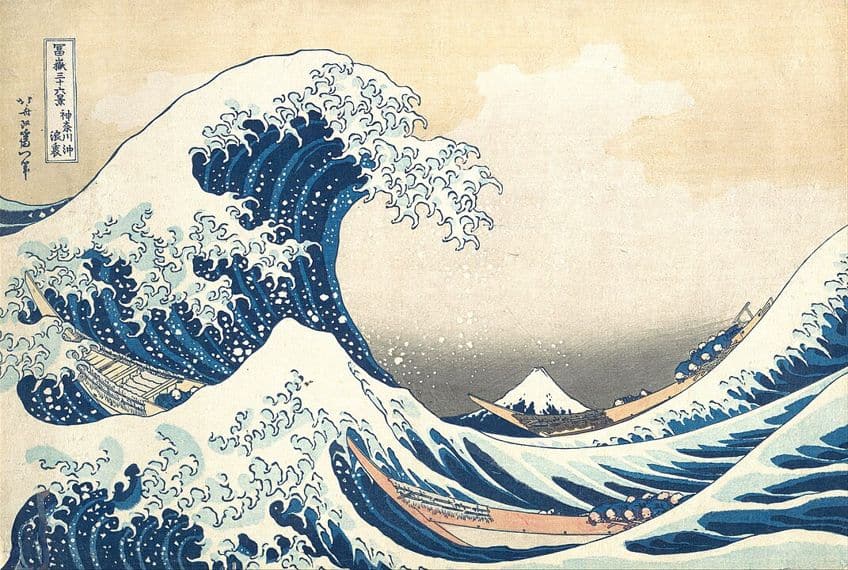
Shunga and its Place in Japanese Art
Shunga, erotic art commonly produced in the Edo period, holds a significant place in Japanese art history. Despite being often marginalized due to its explicit content, shunga was widely consumed by all levels of Japanese society. The Dream of the Fisherman’s Wife, which depicts an ama diver engaged with octopuses, is one of Hokusai’s most famous shunga images.
This piece exemplifies the complexity of shunga, recognized not only for its eroticism but also for its artistic quality and social commentary.
The Artwork Explained
The Dream of the Fisherman’s Wife is a provocative woodblock print designed by Katsushika Hokusai. This section delves into aspects such as visual analysis, symbolism, text, and the piece’s role in the broader cultural context.

Analyzing The Dream of the Fisherman’s Wife
Katsushika Hokusai’s artwork portrays an intimate and erotic scene between an ama (shell diver) and two octopuses. Woodblock printing, a technique widely used in Japan, was employed by Hokusai to create this piece, showcasing intricate lines and delicate shading which suggest movement and tactile sensations.
Cunnilingus is graphically depicted, with the octopus being the active participant while the ama appears to be in a state of both surprise and pleasure.

Symbolism in the Imagery
The octopuses can be interpreted as symbols of lust and desire, beings of the ocean depths enacting unspeakable acts. Yet, they also imply the mysterious and rich life beneath the sea’s surface.
The ama represents not just femininity but also the allure of the forbidden and the blend of danger and excitement linked with her occupation.
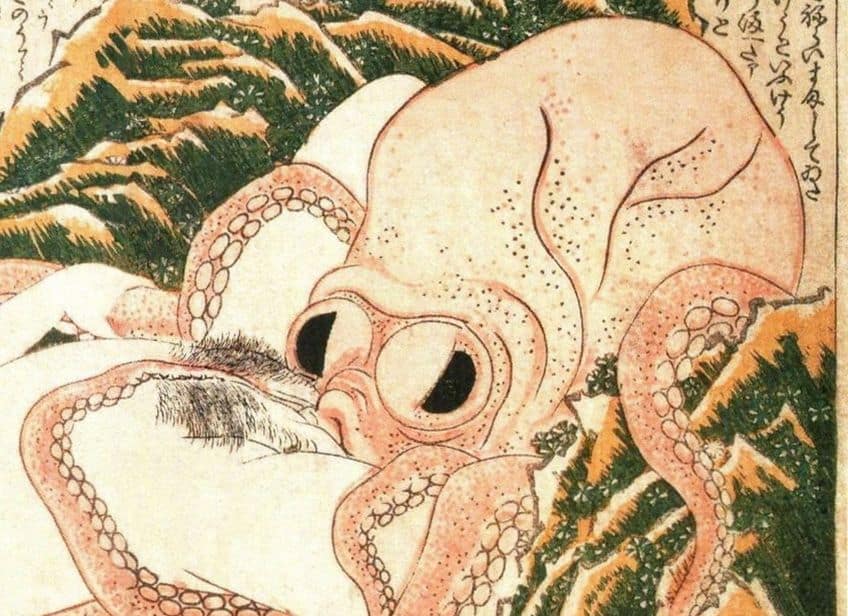
Text on the Print
Text included on the print often reflects the erotic nature of the scene and can provide insight into the characters’ thoughts or the context of the interaction. While the eroticism is visually explicit, the accompanying text on prints like these was a common feature.
This often enhances the imagery with poetic or provocative narrations.
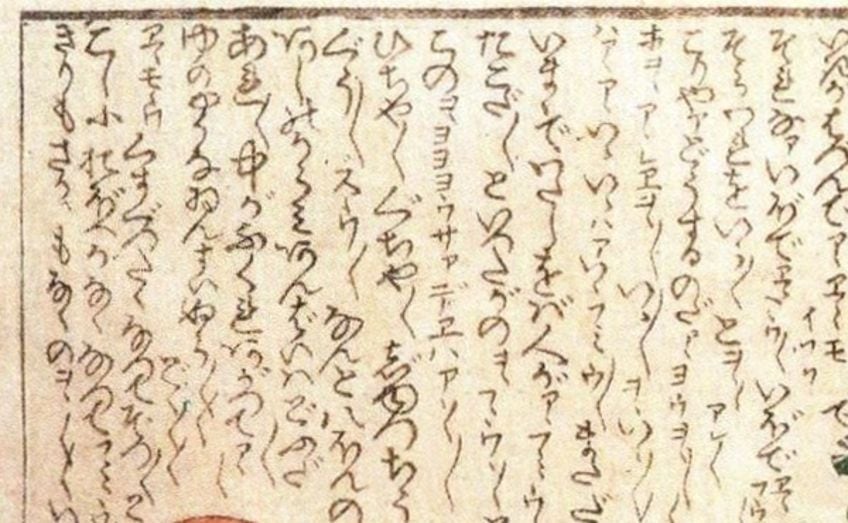
Eroticism and Cultural Perception
Erotica in Edo-period Japan, also known as shunga, was not merely for titillation but also served educational and superstitious purposes. The Dream of the Fisherman’s Wife is one of the most recognized examples, showing boldness and a nuanced understanding of human sexuality.
In the West, the print stirred curiosity and controversy, opening discussions about cultural differences in the perception of sexuality.

Comparative Analysis
Katsushika Hokusai’s The Dream of the Fisherman’s Wife is a seminal work that has impacted various modern art forms and provoked discussions on eroticism within contemporary cultures.
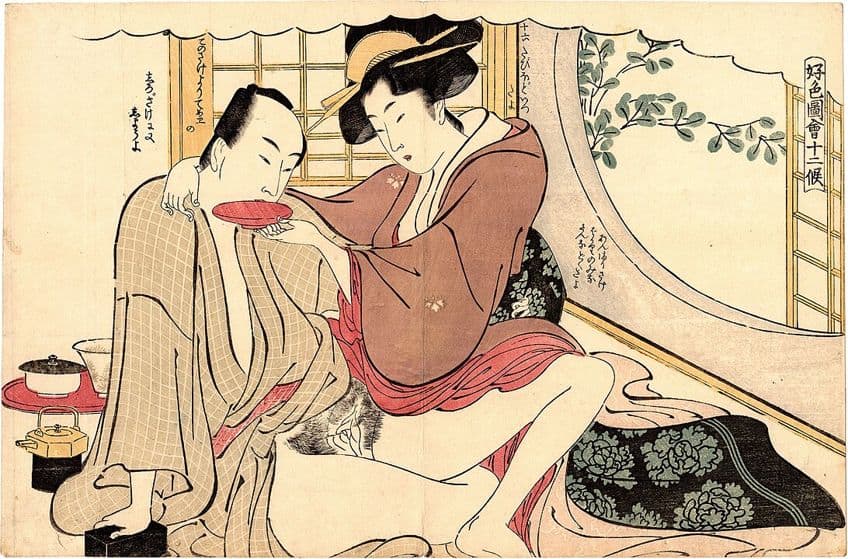
Influence on Modern Art and Media
The Dream of the Fisherman’s Wife has acted as a muse for numerous artists across generations. Notably, Auguste Rodin and Pablo Picasso were inspired by Hokusai’s shunga works, with its bold erotic imagery echoing in their sculptures and paintings. For instance, Picasso’s voluptuous figures and Rodin’s sensual sculptures share a lineage of expressive freedom first found in Hokusai’s erotica.
In more recent years, Japanese artists like Masami Teraoka have drawn direct inspiration from The Dream of the Fisherman’s Wife.
Teraoka’s works often fuse traditional Japanese woodblock aesthetics with contemporary themes, including commentary on sexual politics and Westernization. Moreover, the piece has left its mark on the realm of Modern Japanese Animation, where tentacle motifs surface in various forms. Artist Toshio Maeda, in creating Urotsukidōji, has cited shunga and specifically Hokusai’s work, as an influence for his erotic and fantastical narratives in manga and anime.
Eroticism in Modern Contexts
When placed in modern contexts, The Dream of the Fisherman’s Wife challenges contemporary perspectives on Eroticism and Erotic Art. The work predates Western Victorian attitudes that later influenced global views on sexuality. Its unapologetic depiction of female sexuality stands in contrast to many modern depictions which often reflect differing societal norms and censorship.

The piece also propels conversations about the interpretation and reception of Erotic Art across cultures and epochs. In Western contexts, the work has been misunderstood, with interpretations ranging from non-consensual to mutual pleasure. However, within its Edo-period creation, it communicated more complex themes of fantasy, pleasure, and the subversion of traditional roles.
Legacy and Cultural Impact
The Dream of the Fisherman’s Wife not only stands as one of Katsushika Hokusai’s most recognized works but also as a significant artifact within the genre of shunga. Its reach extends beyond the borders of its origin, having impacted both artistic and literary mediums worldwide, while also challenging and expanding cultural boundaries. The preservation of shunga, particularly works like The Dream of the Fisherman’s Wife, is essential for art history. Museums such as those in New York have played a part in conserving this genre. Given the explicit content, display becomes a nuanced decision, but the artistic value is undeniable.
Museums often feature shunga within the context of Edo Porn and Japonism, emblematic of the cultural exchange between the East and West.
Shunga’s Influence on Literature and Media
Shunga has deeply influenced literature and media by providing a candid look into human intimacy through its portrayal. The depiction of the Maiden in The Dream of the Fisherman’s Wife, entangled with marine creatures, hints at folklore such as the Dragon Palace of the Sea God. This imagery has permeated beyond the confines of erotica, influencing narratives where characters are often likened to courtesans for exploring Boundaries of societal norms.

The Dream of the Fisherman’s Wife stands as a timeless masterpiece that transcends cultural boundaries and continues to captivate audiences with its blend of sensuality, mythology, and artistic prowess. Katsushika Hokusai’s innovative approach to storytelling and his mastery of traditional Japanese art techniques shine through in this iconic work, leaving a lasting impact on the art world and serving as a testament to Hokusai’s enduring legacy as one of Japan’s most celebrated artists.
Frequently Asked Questions
How Has The Dream of the Fisherman’s Wife Influenced Modern Art and Literature?
The Dream of the Fisherman’s Wife has resonated through the ages, particularly influencing modern erotica and tentacle themes in manga and anime. Its provocative imagery has sparked discussions on sexuality and fantasy within the visual arts, leading to its frequent citation as a precursor to certain genres of contemporary Japanese media.
What Was the Cultural Significance of Octopus Imagery in Edo Period Japan?
In Edo period Japan, octopus imagery had multifaceted significance, ranging from folklore and mythological representations to depictions of sexual fantasies. The octopus, often endowed with supernatural attributes, was a subject in both traditional amusements and spiritual symbolism in Japanese art.
How Does The Dream of the Fisherman’s Wife Compare to Other Erotic Art of Its Time?
Compared to other Shunga, or erotic art, from the Edo period, The Dream of the Fisherman’s Wife stands out for its explicit subject matter and Hokusai’s distinctive use of composition and fine detail. While the Shunga genre commonly celebrated sexuality, Hokusai’s work pushed boundaries and evoked bolder fantasies, distinguishing it from contemporaneous erotic illustrations.
Isabella studied at the University of Cape Town in South Africa and graduated with a Bachelor of Arts majoring in English Literature & Language and Psychology. Throughout her undergraduate years, she took Art History as an additional subject and absolutely loved it. Building on from her art history knowledge that began in high school, art has always been a particular area of fascination for her. From learning about artworks previously unknown to her, or sharpening her existing understanding of specific works, the ability to continue learning within this interesting sphere excites her greatly.
Her focal points of interest in art history encompass profiling specific artists and art movements, as it is these areas where she is able to really dig deep into the rich narrative of the art world. Additionally, she particularly enjoys exploring the different artistic styles of the 20th century, as well as the important impact that female artists have had on the development of art history.
Learn more about Isabella Meyer and the Art in Context Team.
Cite this Article
Isabella, Meyer, ““The Dream of the Fisherman’s Wife” by Hokusai – An Analysis.” Art in Context. March 25, 2024. URL: https://artincontext.org/the-dream-of-the-fishermans-wife-by-hokusai/
Meyer, I. (2024, 25 March). “The Dream of the Fisherman’s Wife” by Hokusai – An Analysis. Art in Context. https://artincontext.org/the-dream-of-the-fishermans-wife-by-hokusai/
Meyer, Isabella. ““The Dream of the Fisherman’s Wife” by Hokusai – An Analysis.” Art in Context, March 25, 2024. https://artincontext.org/the-dream-of-the-fishermans-wife-by-hokusai/.




